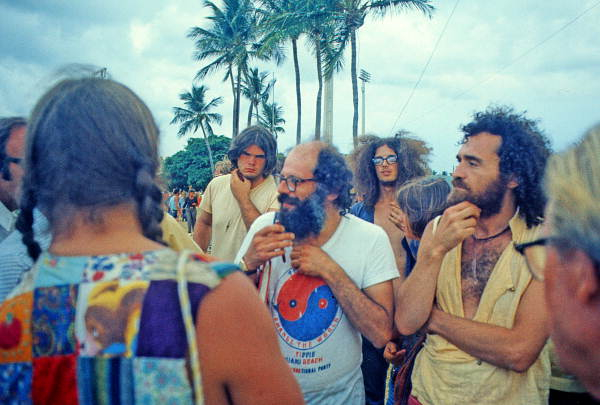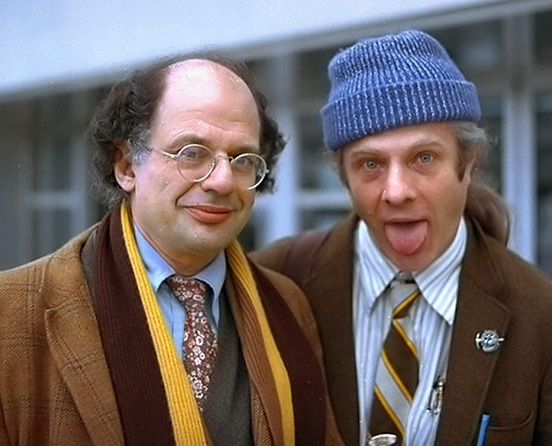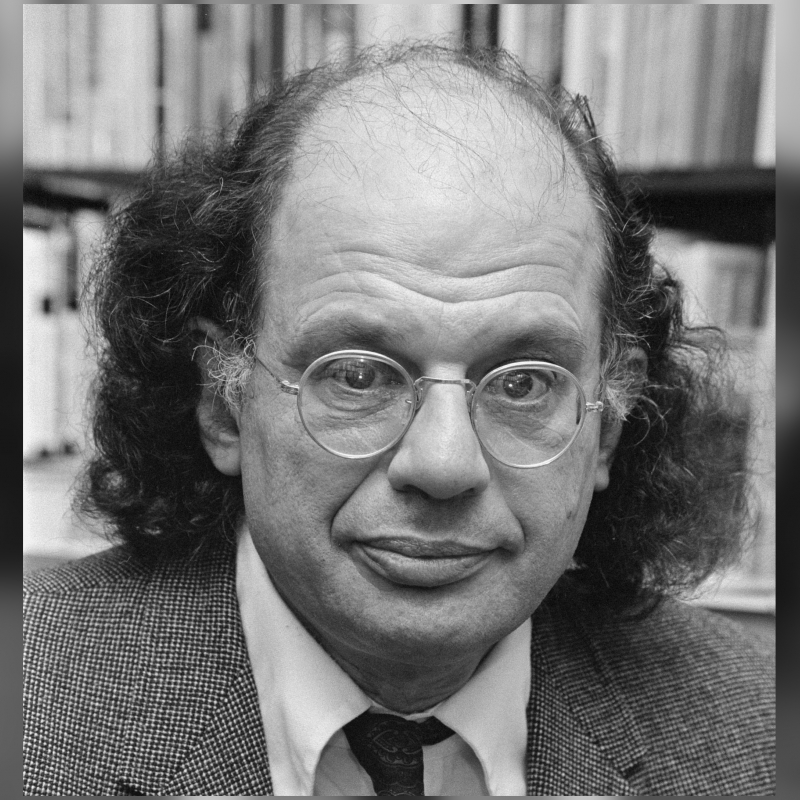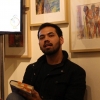American poet Allen Ginsberg was one of the leading figures of the 1950s’ Beat generation and the person who coined the term ‘flower power’. Disillusioned in America, he found spirituality and humanity in India. We look at how his experiences in India shaped his mind, soul and poetry. (Photo Source: Dijk, Hans van_Anefo [CC0])
In the mid-1950s, American poet Allen Ginsberg landed himself in the middle of controversy soon after publishing his epoch-making collection Howl and Other Poems. ‘Howl’ was a poem fused with the sounds of New York City and Harlem jazz, which elaborated on the condition of post-war American society and touched upon the themes of homosexuality, capitalism and non-conformism. In ‘America’, he wrote, ‘America, when will you be angelic? When will you take off your clothes?’
He was put on a trial for obscenity in 1957. As scholar James Sederberg writes in his historical essay about the trial, ‘Lines such as "The asshole is holy!" probably had something to do with people taking offense … Howl is a rage against conformity, inhibition, censorship, puritanism, and everything else that restricts and limits the realization of one's true self.’[i]

In 1962, Ginsberg, along with his boyfriend, Peter Orlovsky, reached India in search of an irrational approach to life (Courtesy: Tony Schweikle [Public domain])
These existential frustrations were already plaguing Ginsberg’s mind, and the trial was the last straw. Though the landmark judgment in his favour resulted in previously censored books such as D.H. Lawrence's Lady Chatterley's Lover and Henry Miller’s Tropic of Cancer being published in the US, and opened doors for many would-be poets, it only made Ginsberg question the ideals of ‘modern’ American society further, and he started to look for an alternative approach to life.
Indian Mysticism
This quest led him to Eastern thought and religious texts such as the Bhagavad Gita and the Tibetan Book of the Dead. Once, after ‘some minor experience of psychedelic drugs’, he told author Suranjan Ganguly during an interview about the time in India when he had visions of internal mandalas that reminded him of ‘the universal form of Krishna in the Gita’.[ii] Desperate to escape the impermanence and chaos that the ‘Western rationalistic, Aristotelian mind was causing’[iii], he set off towards India. In 1962, Ginsberg, along with his boyfriend, Peter Orlovsky, reached India in search of an irrational approach to life. There, he not only found the ‘living transmission of spiritual and visionary energy’, but the time he spent in the country also changed how he thought, wrote and lived. [iv]
In India, Ginsberg visited cities such as Delhi, Varanasi and Almora, explored the Ajanta and Ellora caves, saw the Buddhist shrines at Sanchi and Sarnath and met numerous yogis and spiritual gurus along the way. He was taught how to chant ‘Om’ by Swami Shivananda and discussed the effects of LSD (lysergic acid diethylamide) on human consciousness with the Dalai Lama in Dharamsala. In Dalhousie, he met Chögyam Trungpa Rinpoche, who would later become his guru in America. In his famous anti-war poem ‘Wichita Vortex Sutra’, he wrote of some of the people he had met:
I call all Powers of imagination
to my side in this auto to make Prophecy,
all Lords
of human kingdoms to come
Shambu Bharti Baba naked covered with ash
Khaki Baba fat-bellied mad with the dogs
Dehorhava Baba who moans Oh how wounded, How wounded
Sitaram Onkar Das Thakur who commands
give up your desire
Satyananda who raises two thumbs in tranquillity
Kali Pada Guha Roy whose yoga drops before the void
Shivananda who touches the breast and says OM

In Calcutta and Patna, Ginsberg spent time with litterateurs such as Malay Roy Choudhury, Sunil Gangopadhyay and Shakti Chattopadhyay, who influenced his poetic style and had a deep impact on his post-India poems (In pic: With poet Peter Orlovsky; Courtesy: Herbert Rusche [CC BY-SA 3.0])
In the fall of 1963, Ginsberg returned to America—spiritually enlightened and changed in unexpected ways. India turned his attention ‘away from his cosmic obsessions and toward the humanity around him in the swarming streets of Kolkata and Varanasi,’[v] said Steve Silberman, Ginsberg’s teaching assistant at Naropa University.
Of Coffee and Death
In Calcutta and Patna, he spent time sipping tea and coffee with litterateurs such as Malay Roy Choudhury, Sunil Gangopadhyay and Shakti Chattopadhyay, who influenced his poetic style and had a deep impact on his post-India poems. In the interview with Suranjan Ganguly, Ginsberg said he was excited by the idea of ‘a whole gang of poets like there were in New York and San Francisco, who were friends’ and that ‘the East and West could meet’.[vi]
His experiences in India taught him compassion and the importance of the present—something that would become a recurring theme in his poetry. During his second visit to India, a year after the Bangladesh Liberation War of 1971, he observed the influx of refugees from what was then ‘East Bengal’. Moved by the sight, in his poem ‘September on Jessore Road’, he wrote:
Millions of Souls nineteen seventy-one
homeless on Jessore under grey sun
A million are dead, the millions who can
Walk toward Calcutta from East Pakistan.
Ginsberg coined the term ‘flower-power’ to encourage the Gandhian way of non-violent protests and was a pioneer of the counterculture movement that created the anti-war hippies. He spent hours observing cremations at the Manikarnika ghat in Varanasi; he wanted to witness and smell the mortal flesh and ‘see the inside of the human body, to see the face cracked and torn, fallen off, the brains bubbling and burning’.[vii] It helped him understand and get rid of his fear of death. In the interview with Ganguly, Ginsberg admitted that he was ‘amazed by the openness’ and ‘visibility of death, which is hidden and powdered and rouged and buried in a coffin in the West’ and said that it was ‘like an education which is totally different from the cultivation of the notion of the corpse as still relevant and alive’.[viii]
Five days before seventy-year-old Allen Ginsberg died in New York on April 5, 1997, he wrote his last poem titled ‘Things I’ll Not Do (Nostalgias)’, and dedicated a paragraph to India (Courtesy: Asia Society/Youtube)
When, in March 1997, Ginsberg finally came face-to-face with death, he accepted it as it was. Gelek Rinpoche, his spiritual teacher, said that ‘after Allen got the news [of his imminent death], he began the celebration of his death.’[ix] Ginsberg spent his final days writing poems and meeting friends. Five days before seventy-year-old Allen Ginsberg died in New York on April 5, 1997, he wrote his last poem titled ‘Things I’ll Not Do (Nostalgias)’, and dedicated a paragraph to the land that had offered him deliverance:
Nor ever return to Kashi "oldest continuously habited city in the world"
bathe in Ganges & sit again at Manikarnika ghat with Peter,
visit Lord Jagganath again in Puri, never back to Bibhum take
notes tales of Khaki B Baba
Or hear music festivals in Madras with Philip
Or enter to have Chai with older Sunil & Young coffeeshop poets,
Tie my head on a block in the Chinatown opium den, pass by Moslem
Hotel, its rooftop Tinsmith Street Choudui Chowh Nimtallah
Burning ground nor smoke ganja on the Hooghly
This article was also published on Scroll.in.
Notes
[i] James Sederberg, ‘The Howl Obscenity Trial,’ n.d. http://www.foundsf.org/index.php?title=The_Howl_Obscenity_Trial (last accessed on July 25, 2019).
[ii] Ibid.
[iii] Suranjan Ganguly, ‘Allen Ginsberg in India: An Interview,’ Ariel 24, no. 4 (1993): 24.
[iv] Ibid.
[v] Steve Silberman, ‘The Birth of the Sixties: When the Beats became Hippies,’ 2008, https://www.lionsroar.com/the-birth-of-the-sixties-when-the-beats-became-hippies/ (last accessed on July 25, 2019).
[vi] Ibid.
[vii] Suranjan Ganguly, ‘Allen Ginsberg in India: An Interview,’ Ariel 24, no. 4 (1993): 26.
[viii] Ibid.
[ix] Stokes Howell, ‘Allen Ginsberg,’ 1997, https://tricycle.org/magazine/allen-ginsberg-2/ (last accessed on July 25, 2019).













